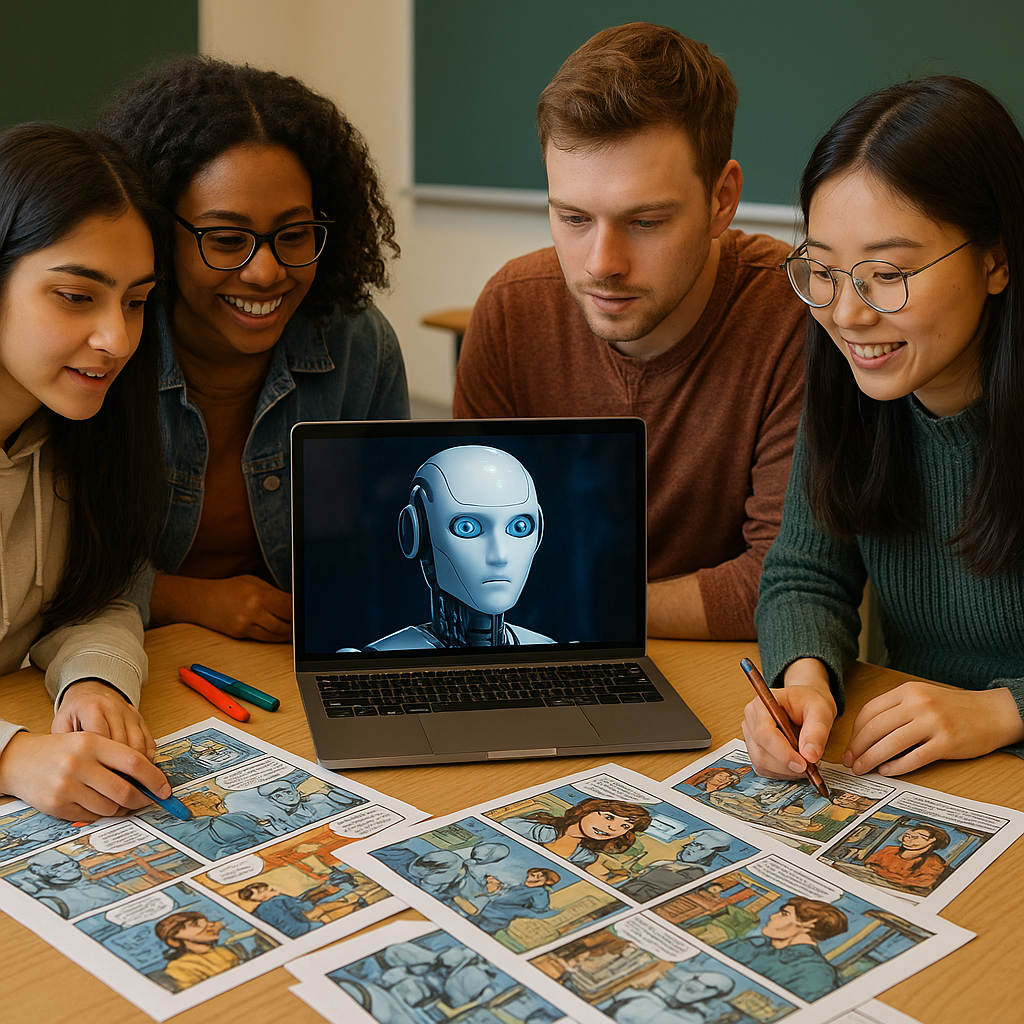From skepticism to mastery: How generative AI is reshaping higher education
The study has found a recurring trajectory among university students: an initial mix of intimidation and overconfidence when first introduced to generative AI tools. Many students began their assignments either wary of AI or overly reliant on its automation, but through the guided project, their understanding evolved. As students progressed through iterative design cycles, engaging in tasks such as scriptwriting, visual storytelling, and peer feedback, they began to develop a more balanced and critical relationship with the technology.

Educators across four continents are reporting improvement in student engagement and comprehension following the use of generative AI in university classrooms. A new international study has found that collaborative, AI-powered creative assignments can significantly enhance academic retention and critical thinking. The study, titled “From Intimidation to Innovation: Cross-Continental Multiple Case Studies on How to Harness AI to Elevate Engagement, Comprehension, and Retention” and published in Education Sciences, provides empirical insights from diverse academic settings in Canada, the United States, the United Kingdom, and Australia.
Spanning multiple institutional contexts and disciplines, the research investigates how student-created AI-generated comic books can transform apprehension toward artificial intelligence into deeper learning and increased digital fluency. Conducted as a series of cross-continental case studies, the project reveals a common pattern of initial student uncertainty giving way to critical experimentation, team-based problem solving, and enduring knowledge gains.
How does generative AI affect student attitudes toward learning?
The study has found a recurring trajectory among university students: an initial mix of intimidation and overconfidence when first introduced to generative AI tools. Many students began their assignments either wary of AI or overly reliant on its automation, but through the guided project, their understanding evolved. As students progressed through iterative design cycles, engaging in tasks such as scriptwriting, visual storytelling, and peer feedback, they began to develop a more balanced and critical relationship with the technology.
Instructors structured the assignment to integrate AI into the learning process rather than present it as a standalone tool. This pedagogical strategy created space for student-led exploration. Across classrooms, students reported moving from a passive user role to an active collaborator with AI, improving their comprehension of course content and their confidence in ethical tool use.
The shift in mindset was most visible in how students approached the role of AI in shaping narratives. Initially overwhelmed by its capabilities or skeptical of its educational value, students learned to harness AI in ways that served specific academic goals. The study found that this evolution helped dissolve misconceptions about AI as either infallible or inherently threatening, ultimately fostering digital empowerment and curiosity.
Can creative AI projects improve comprehension and retention?
The central pedagogical intervention in the study involved students co-creating comic books using generative AI. Far from a superficial exercise, this format required the application of abstract concepts to concrete visual and narrative formats. Students were asked to translate theoretical material, ranging from business ethics to leadership theory, into illustrated storylines that communicated key ideas clearly and creatively.
This task of synthesis proved to be a powerful learning catalyst. By designing visual narratives, students engaged multiple cognitive domains, from critical analysis to spatial reasoning. The challenge of articulating complex themes in a clear, accessible, and visually coherent format forced students to internalize course material at a deeper level than traditional assessment models.
Moreover, retention was significantly improved due to the emotional and creative investment students made in their projects. According to the study, memory is strengthened when learners feel a sense of ownership over their work and when the learning process involves novelty, storytelling, and reflection, all of which were present in the comic book assignment. Students not only recalled course concepts more effectively but also demonstrated an ability to apply them in new contexts.
What broader educational benefits does this approach offer?
The AI-integrated project delivered broader learning gains across teamwork, digital literacy, and ethical reasoning. Working in groups, students had to manage the responsibilities of co-authorship, navigate disagreements in creative direction, and produce a coherent final product that met academic and technical standards. This collaborative environment helped cultivate soft skills critical for the modern workforce.
The exposure to generative AI also prepared students to interact more responsibly with emerging technologies. Through trial and error, students encountered the limitations, biases, and creative constraints of AI-generated content. These experiences seeded classroom discussions about the ethical boundaries of AI use, including the importance of human oversight, transparency, and intellectual integrity.
The multi-institutional design of the study underscores its broader applicability. Despite cultural and curricular differences across Canada, the U.S., the U.K., and Australia, the findings converged around a core insight: when framed as a creative partner rather than a computational crutch, generative AI can play a valuable role in modern education. The consistency of student experiences across borders suggests that similar outcomes could be achieved in other academic disciplines and educational systems.
The research also offers a potential roadmap for integrating generative AI into secondary and professional education. It provides evidence that experiential, project-based learning, augmented by accessible AI tools, can shift perceptions of both technology and learning itself. The project shows a way to embed AI education without abstract coding modules, instead allowing students to encounter the tool in applied, meaningful scenarios.
- READ MORE ON:
- generative AI in education
- AI in higher education
- educational use of generative AI
- cross-continental study on AI in education
- AI-driven classroom innovation
- real-world AI applications in teaching
- digital transformation in education
- future of learning with AI
- human-AI collaboration in education
- FIRST PUBLISHED IN:
- Devdiscourse










